January - Winter ways
Clay render
This fall and winter, we have intermittently worked on our sunny room. It is the south-most room in the old part of our house, built in the 1800s. We chose to put in large new windows in the hitherto window-less south wall of our house, to invite more sunshine.
This room was used as a laundry room until the 1980s, with a wood-fired water kettle for washing. Water was brought in from the adjacent beech, which no longer is visible. The stream was buried in a concrete pipe sometime in the 1980s. Now that concrete pipe has some problems, since the throughput is constricted, which leads to flooding at our neighbour, and high water table in our basement.
Anyways, we applied clay render on the southern wall end as well as on part of the floor. We had tried once at our friends place, and this was the first time we did it ourselves. Not perfectly smooth, but very artisanal.
We use clay from somewhere else, and our own sand from our garden in the mix, as well as some horse manure from the neighbour.
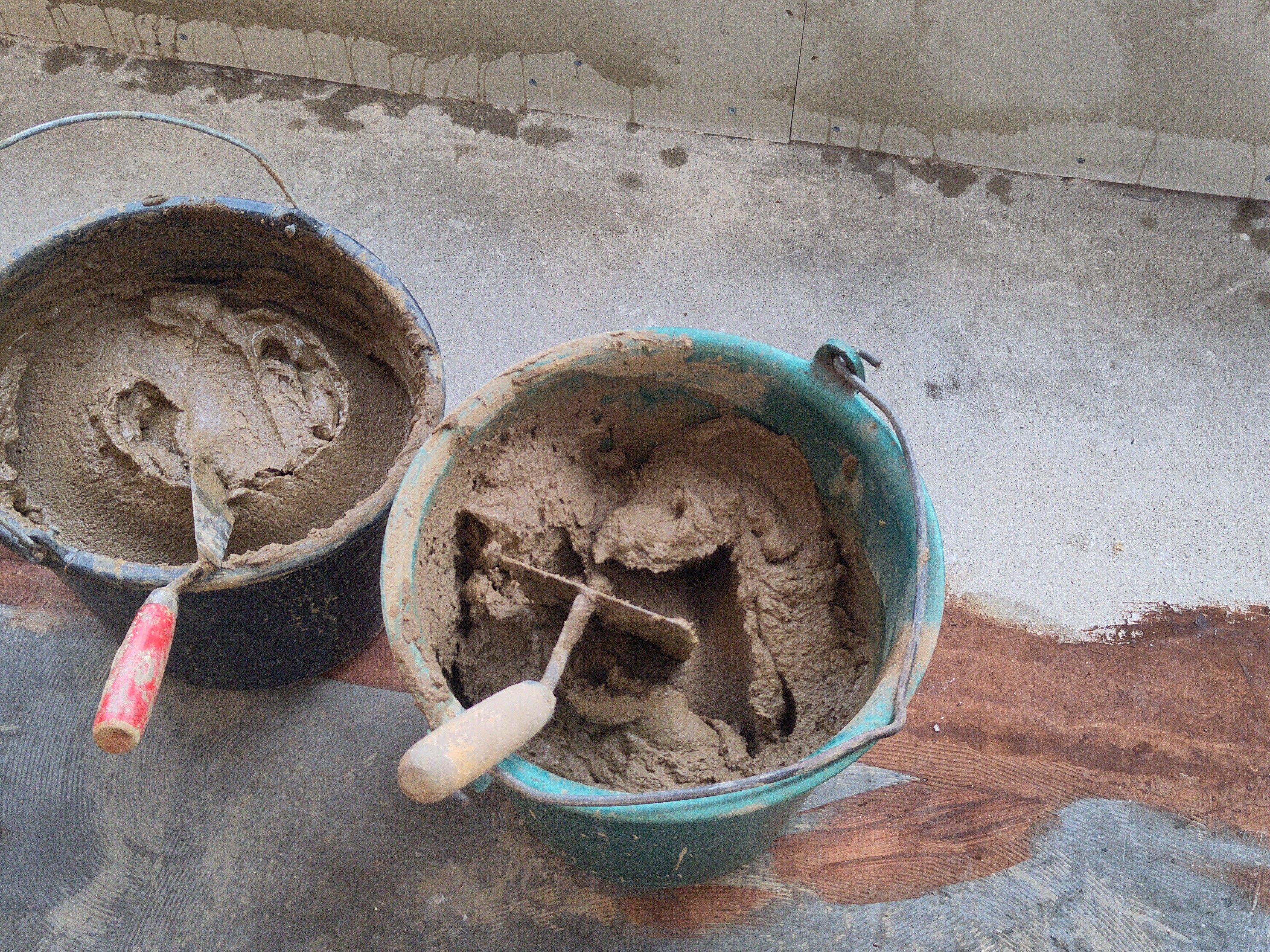
Clay render mix. 1 part clay, 3 parts sand, 0.5 part horsedung, 1.5 parts water.
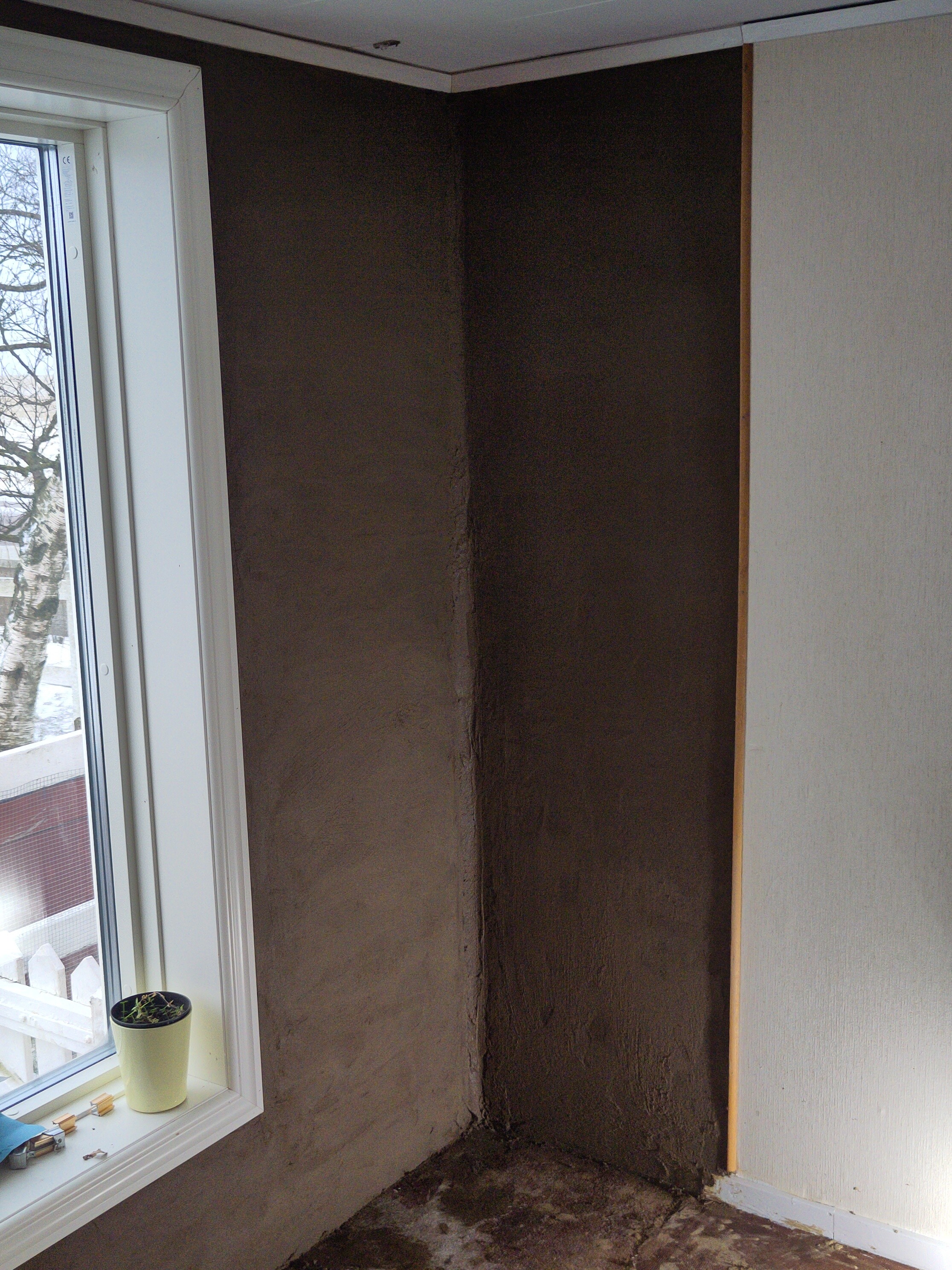
We also learned how to make edible paint, a.k.a. egg-tempera.
We make two separate mixes: One mayonnaise out of 10 eggs + same weight lineseed oil. The other is a mix of same weight of water + pigment. We used iron oxide, zinc oxide and burned soil as pigments, all of which we got from the excellent artisanal paint dealer Claessons.
It is great to work with edible materials (except the zinc oxide).
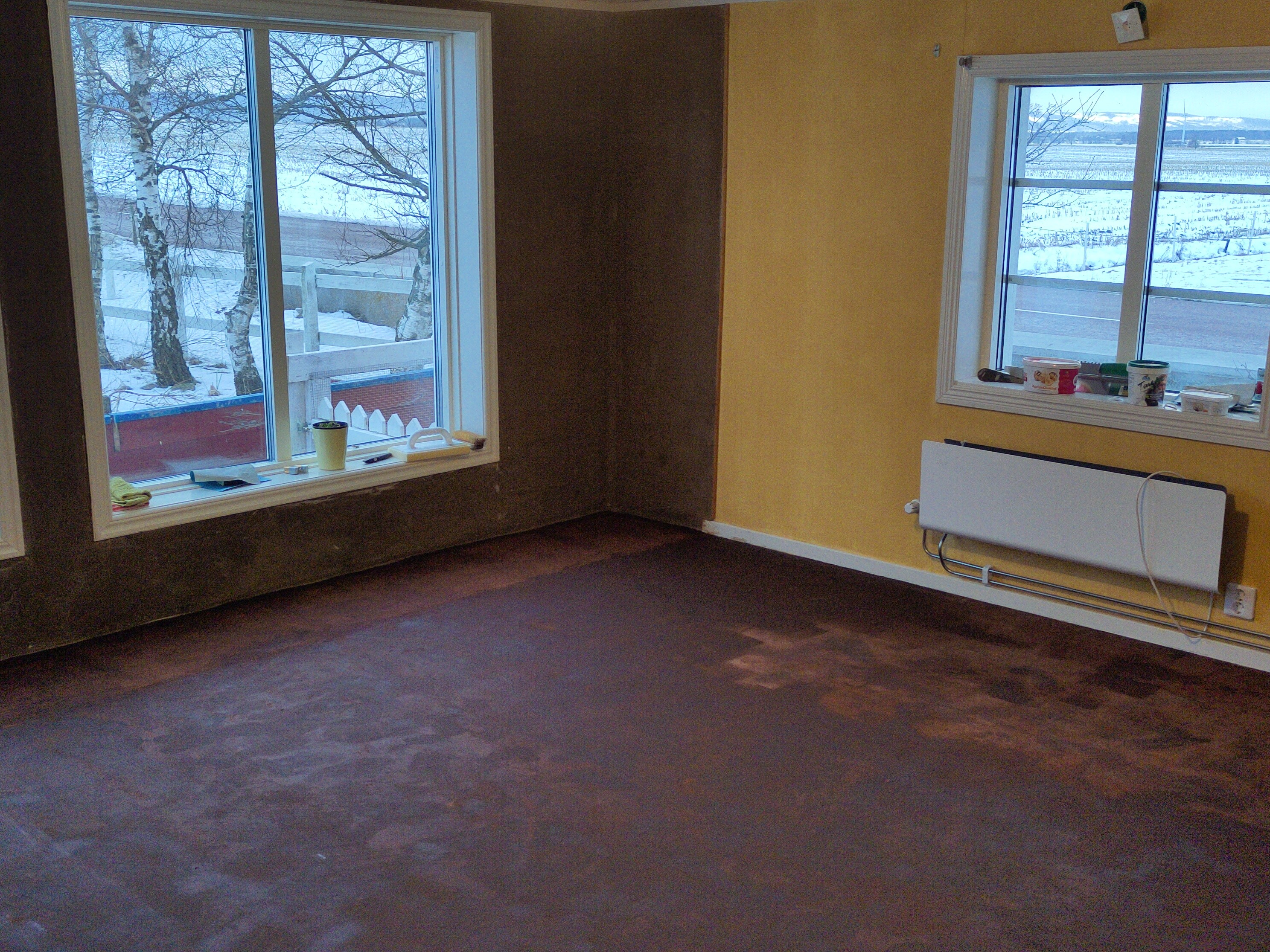 Walls and floor painted with egg-oil-tempera with iron oxide (yellow) and burned earth/umbra (floor)
Walls and floor painted with egg-oil-tempera with iron oxide (yellow) and burned earth/umbra (floor)
Tracking time
Winter is a time when the movement of animals is recorded as tracks in the snow. The exploratory movement of a couple of hares in our tree nursery was shown in December, and now we have blocked the last entry point:
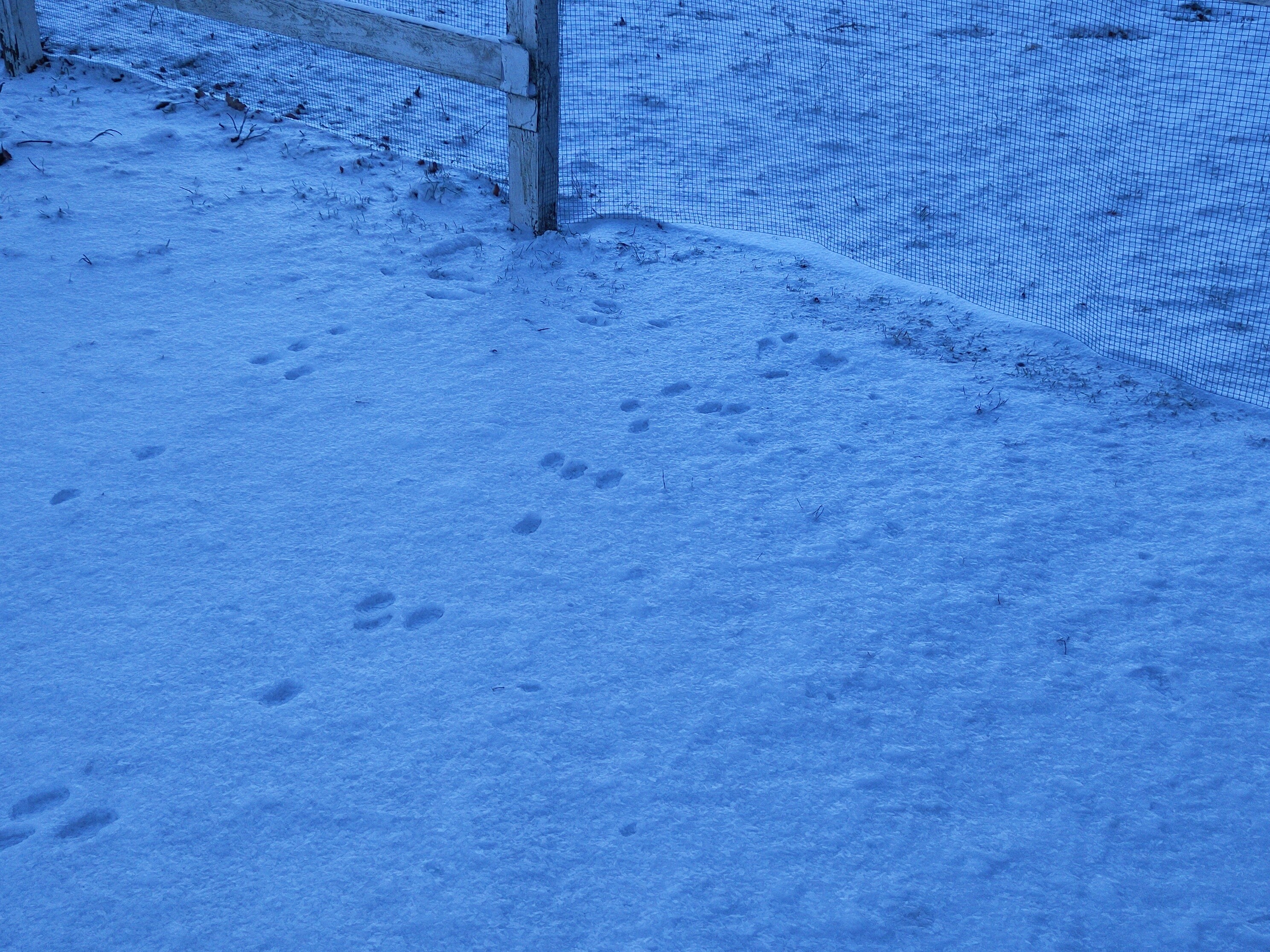
Mice are very active next to our house, and we have caught a dozen or so this winter. They are fine, as long as they stay outdoors, and especially if they don't eat our nut that we store for seeds. Every winter we lose some seeds, and that is fine. We collect much more than we need.
 Mice tracks
Mice tracks
On the other other hand, we have a real problem with water voles, a kind of burrowing vegetarian rat that loves to eat roots of trees. We can see their movement under the snow surface, and in some places we see the openings to their burrows.
We are still losing trees to these d***head rats. Every week one or two of the hazel bushes is lost, and we have ten traps of three types to capture and kill the evasive rodents. Until now, the battle is not quick. One type of trap, with a guilliotine mechanism (top-cat) is the only one that has worked so far. Five down using that one.
The other two types (stand-by and swiss-flex) have not yet yielded any kills. If you have positive experiences with these two types of traps, please let me know how you do it.

Water voles in the snow
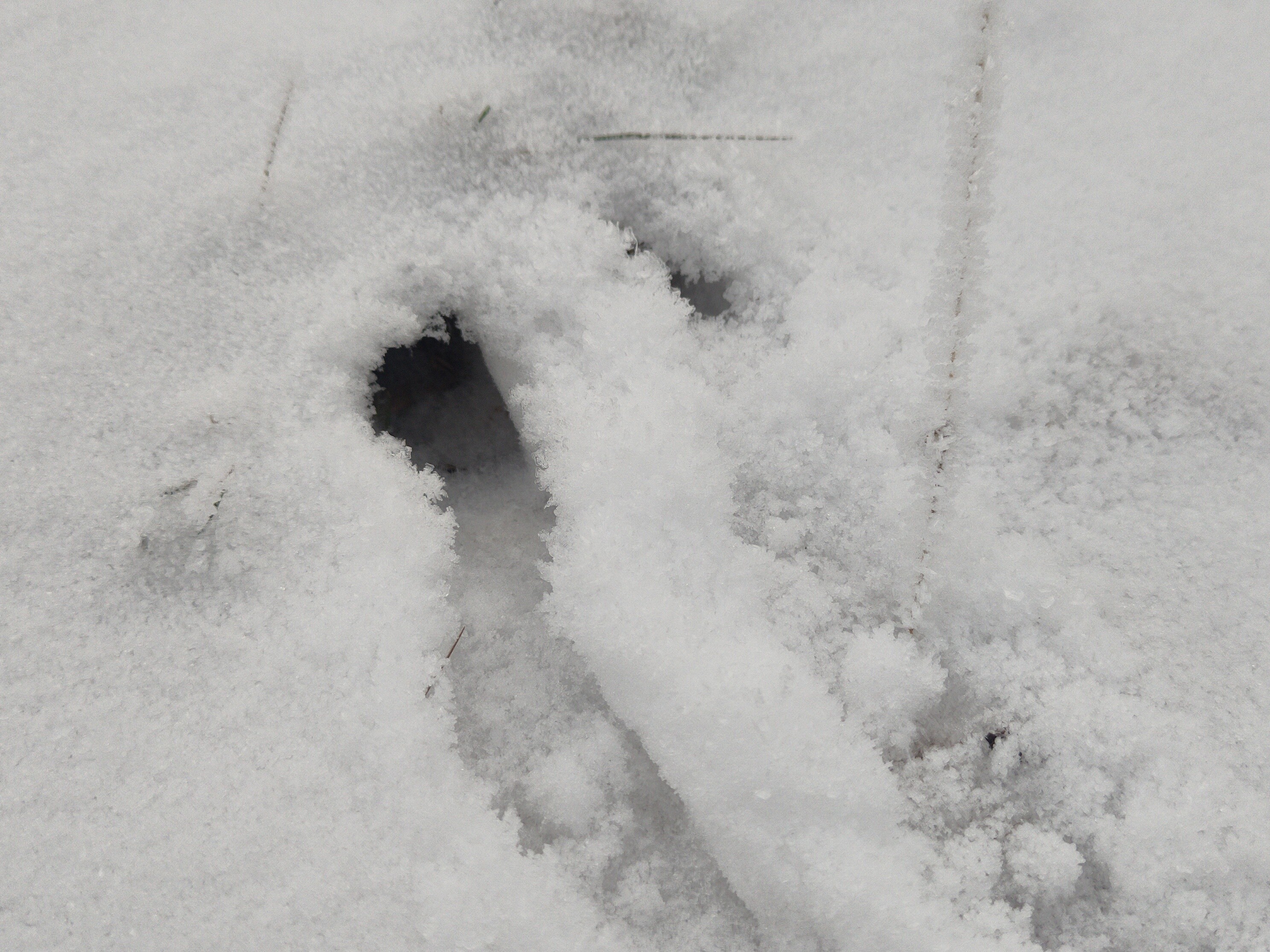
Water vole burrow
A kilometer from our place is a small woods, maybe 200x500 meters. We took a walk in the snow and enjoyed the beautiful sunshine.
We found tracks from a whole family of wild boar. I hope they stay away from our place. They could easily upturn our fields in a single night, even though they would not eat our trees, just our vegetables.
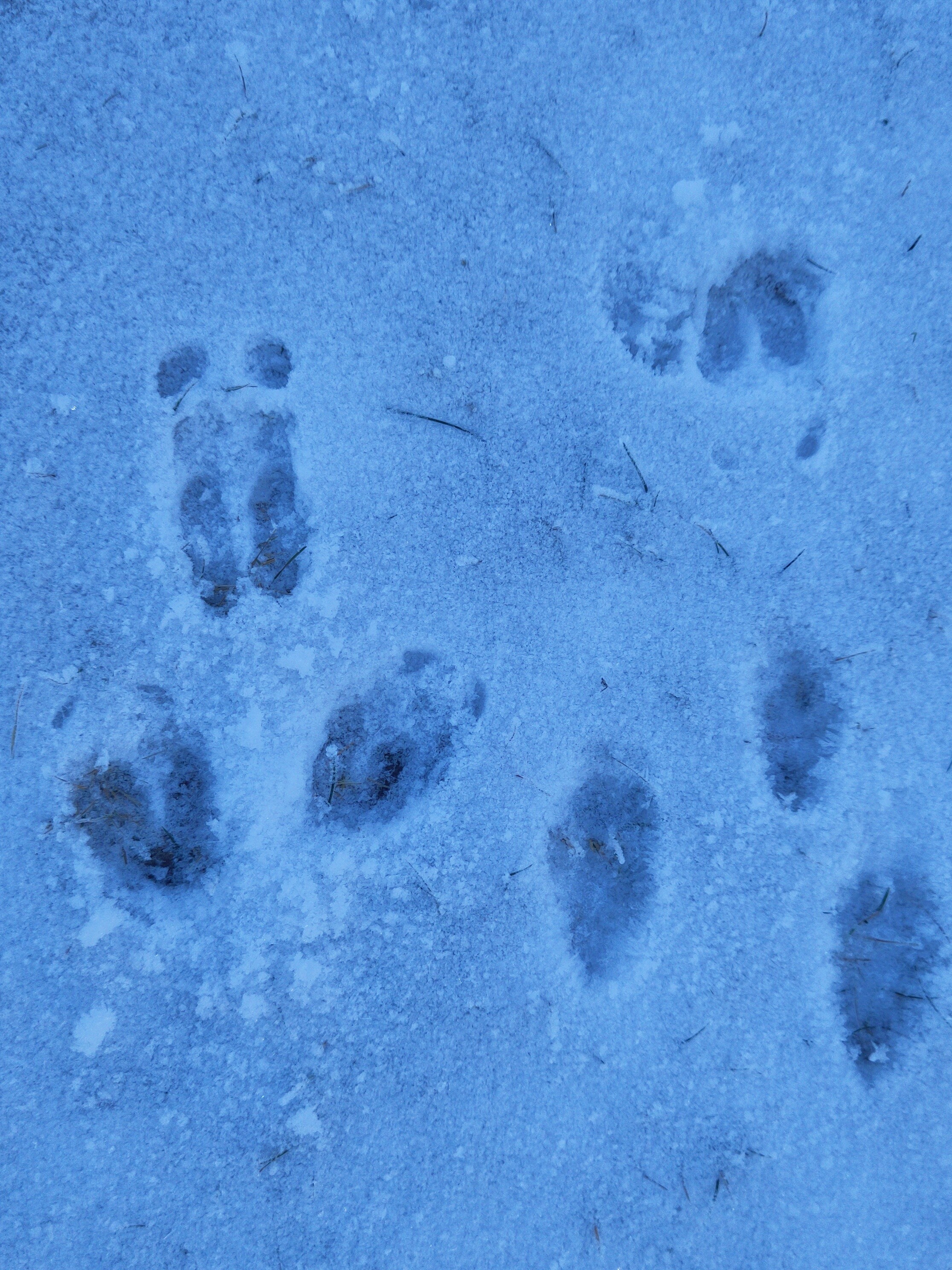
Dance tracks from the boars
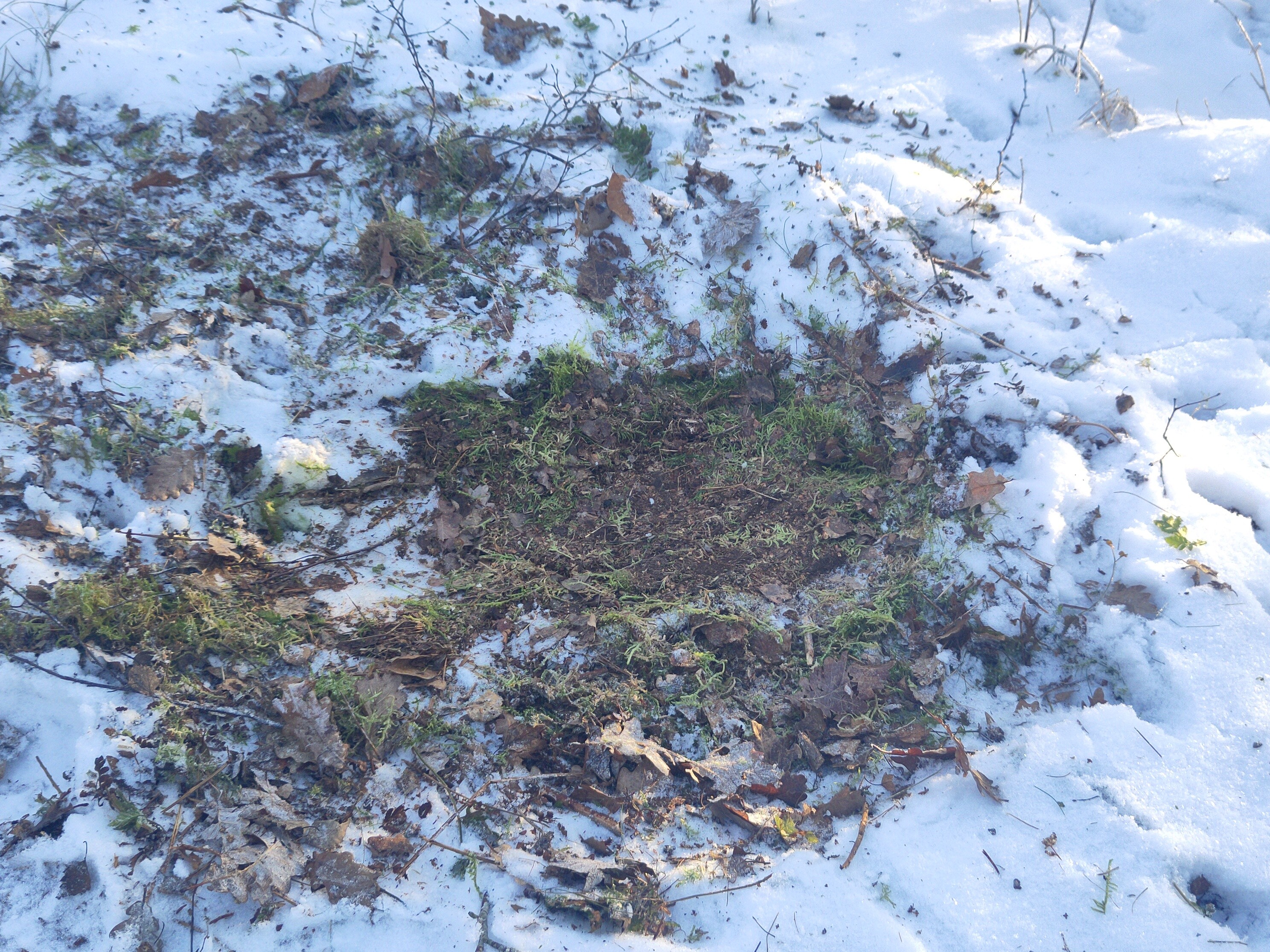
Sleeping place for a family of boars
When the snow melted in the end of January, we could even see tracks in the fields across the road, 500 meters the other direction.
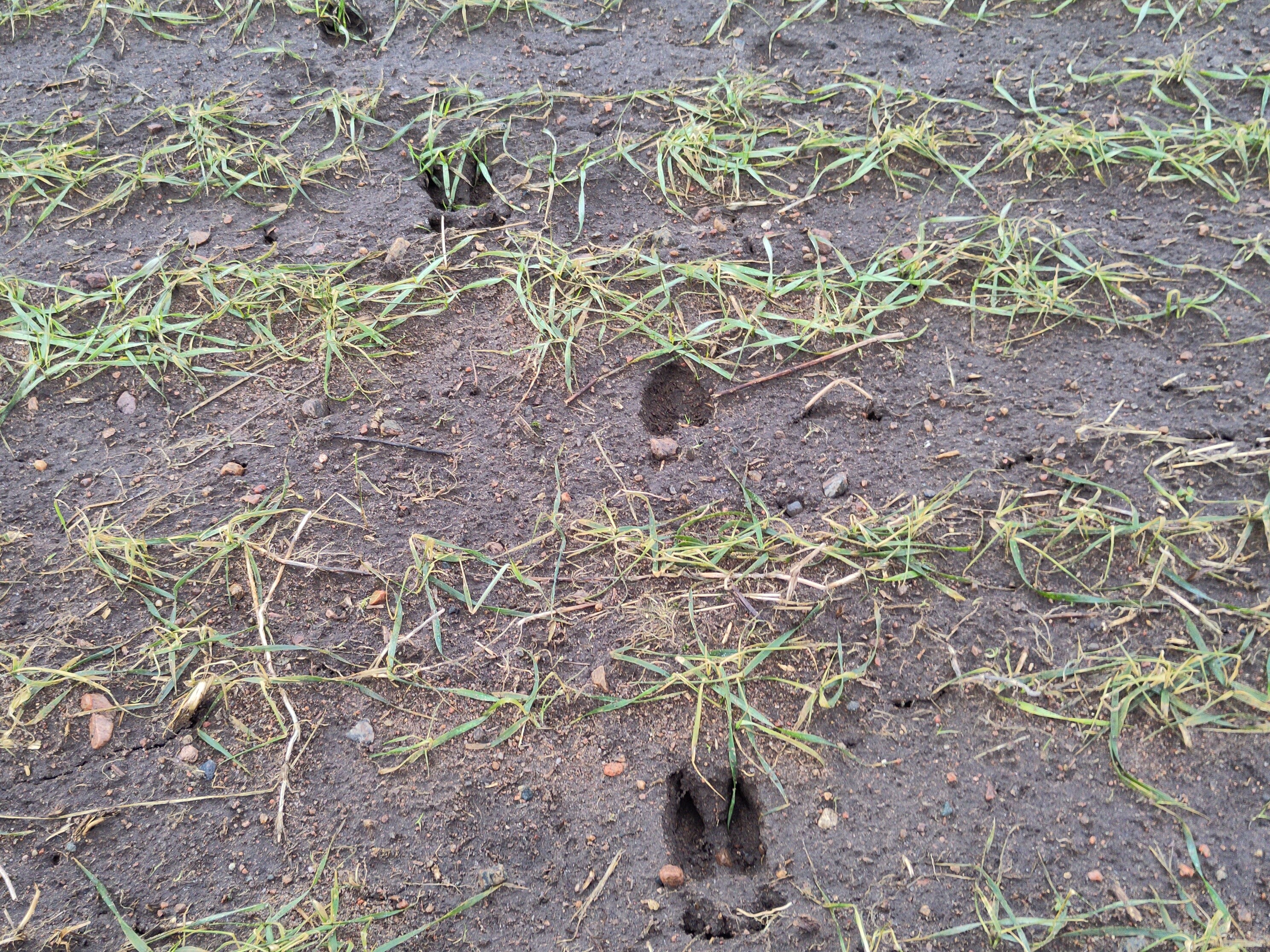 Boar tracks in the field
Boar tracks in the field
Trees talk slowly
Winter makes trees even more beautiful. We had the rainiest fall in recorded history, with very little sunshine since July 1st. Maybe that's why it feels so liberating with cold winter days that start in mist and develop into sparkling diamond showers.
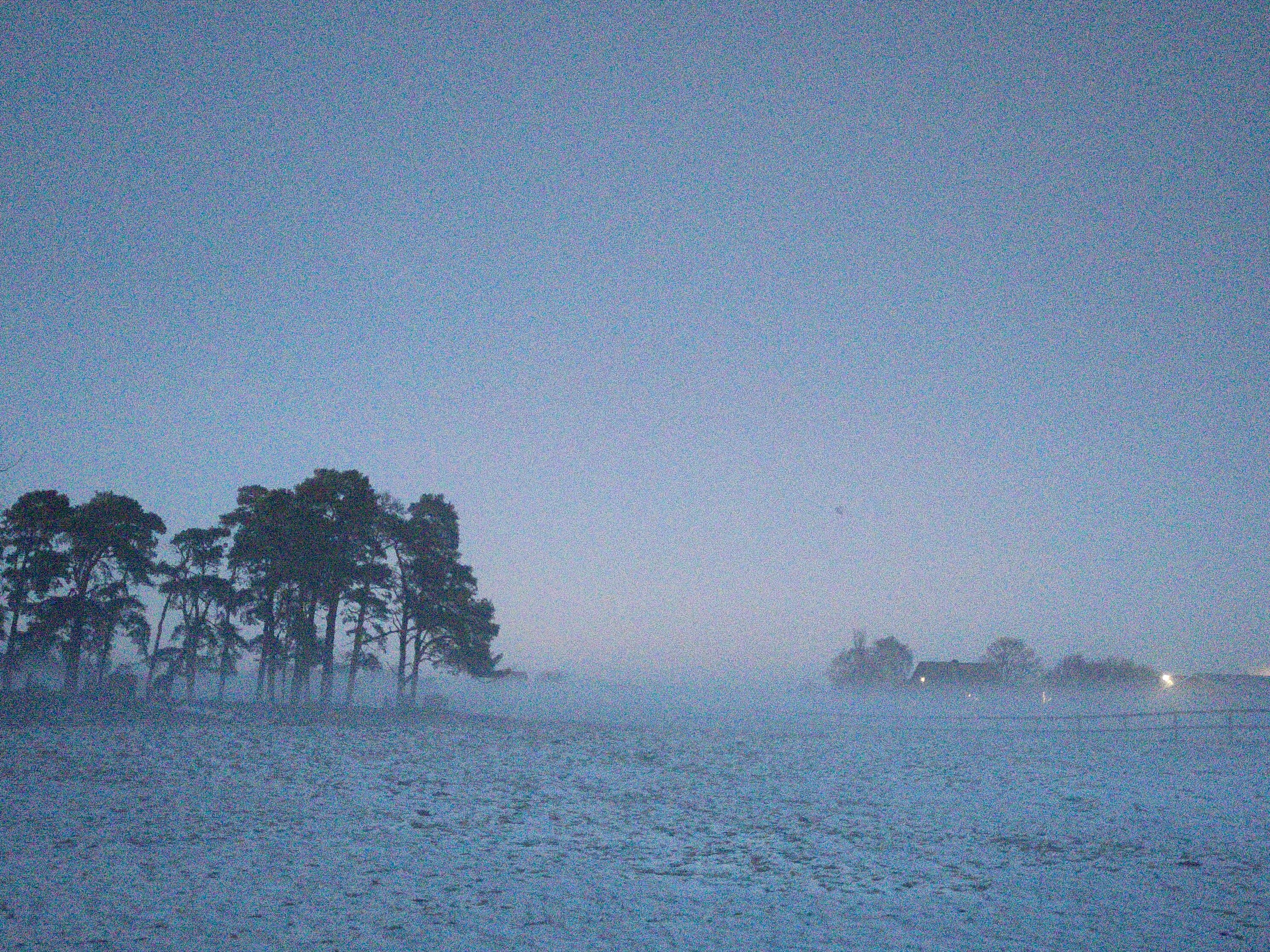
Trees in the morning
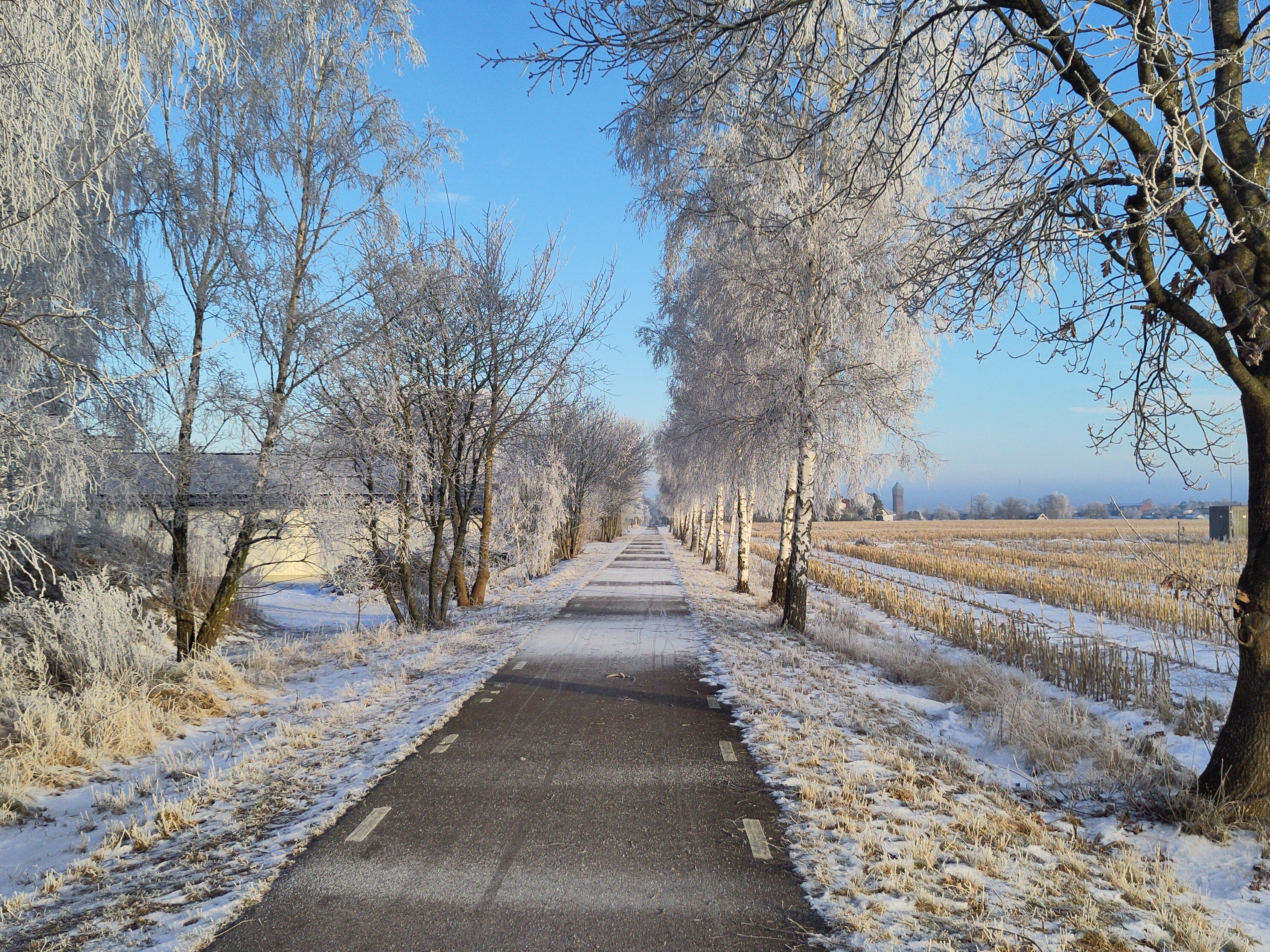
Trees on the bike road into town

An oak, where the boars live
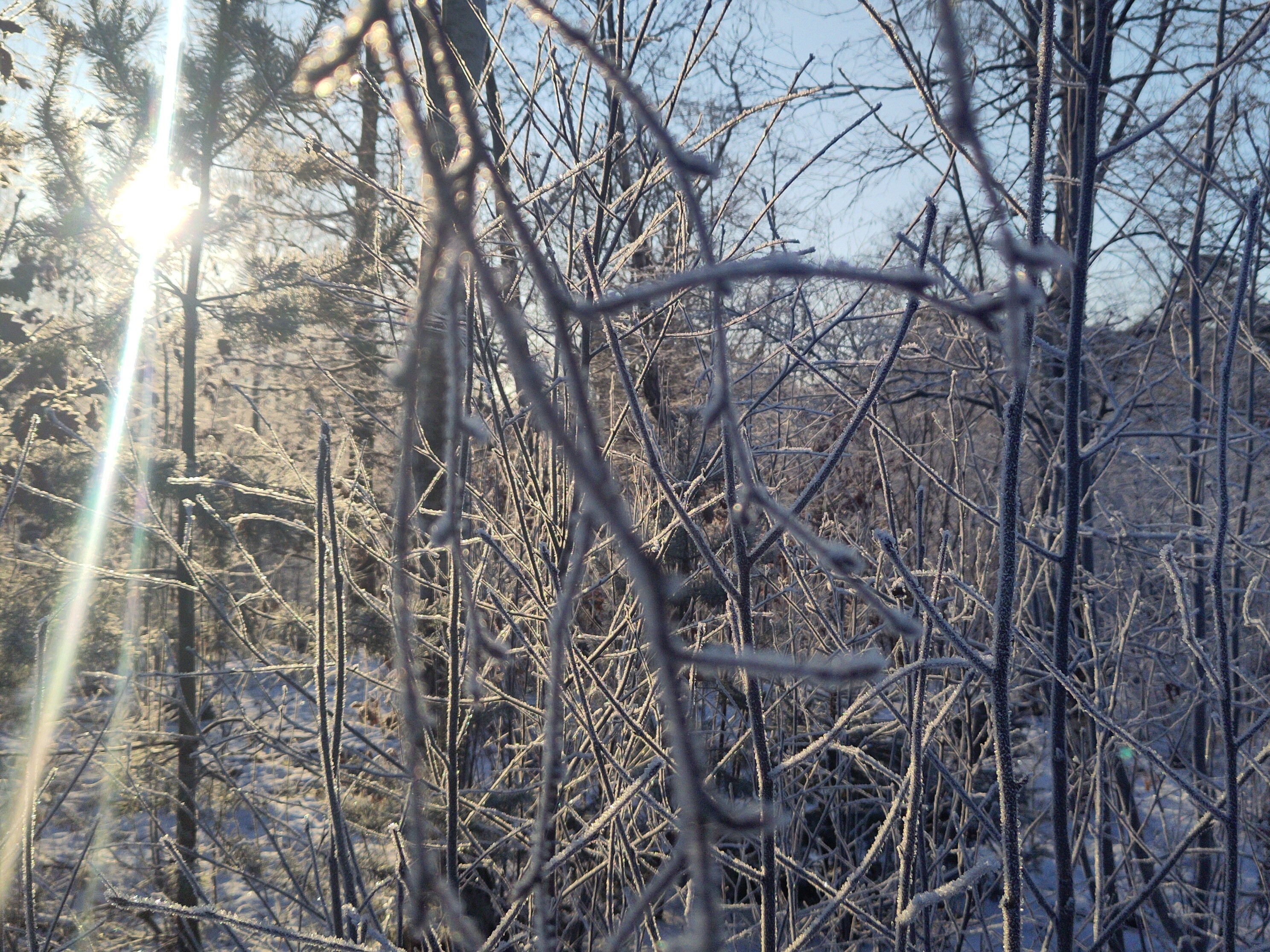
More trees in snow - what a joy!
Solar power and shade
Our Solar PV installation is doing great some days. The winter sunshine can be terrific, though short. For a couple of hours, we can reach quite good output. Some days there is nothing, despite the sunshine, since the panels sometimes are covered in a few cm of snow.
And as has been suggested elsewhere: little energy for plants to grow means very little surplus energy to harvest with our electronic devices.

Solar panels - no power
One nice example of shade trees for summer use are these well-pruned linden trees in Gothenburg. We will do a similar thing on the south side of our place, to show how much more energy efficient a green wall is, compared to air conditioning.
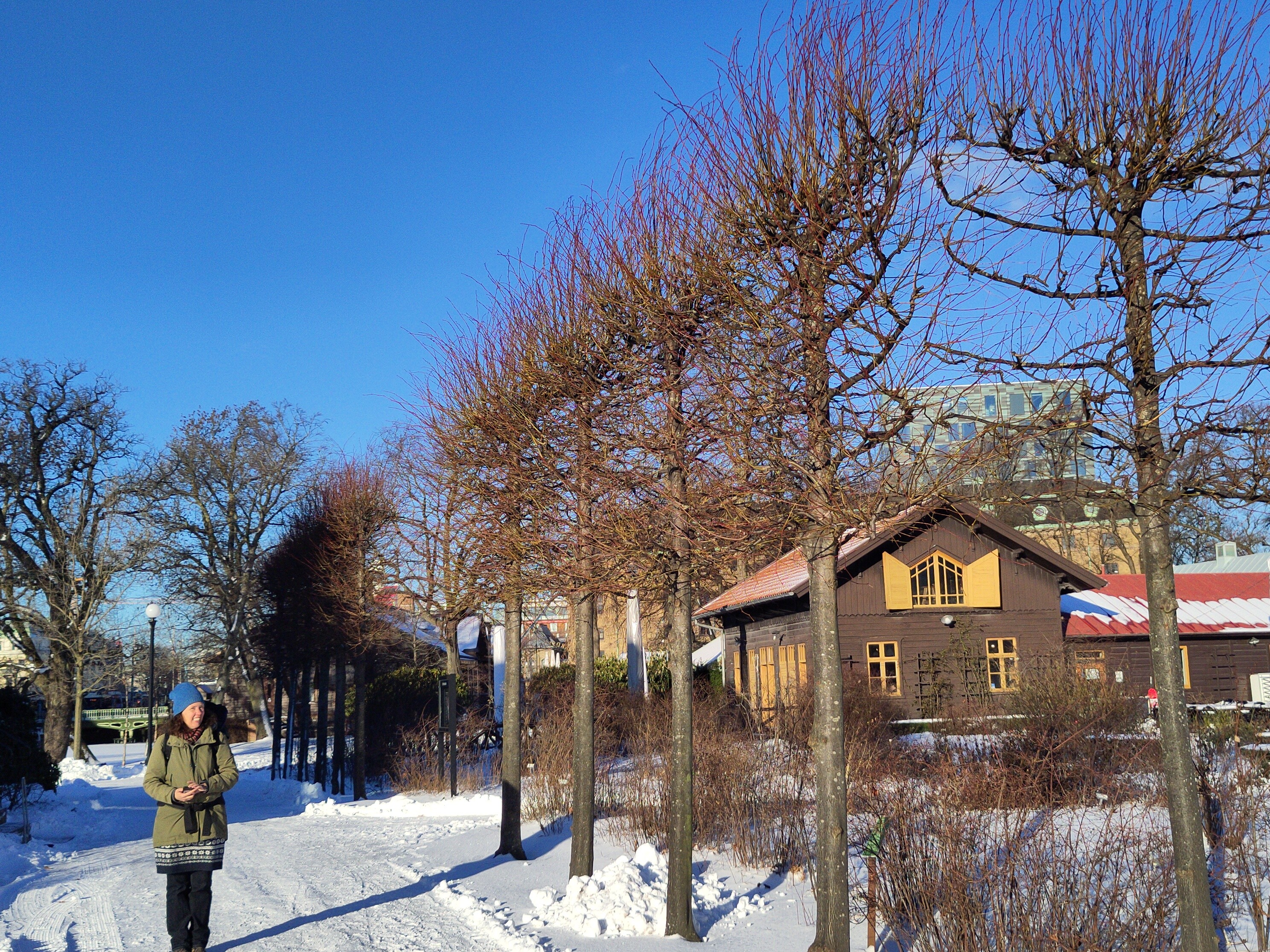
Well pruned linden trees - shade in the summer, beautiful branches and light in the winter
Winter work
There are many maintenance tasks to do in the winter months. Finishing the bookkeeping for the business and preparing the tax documents. Planning the next season. Improving the webshop. And oiling the woodden handles of all the garden tools. We use local lineseed oil, which is slow to dry but durable and edible. I more and more enjoy using compostable materials.
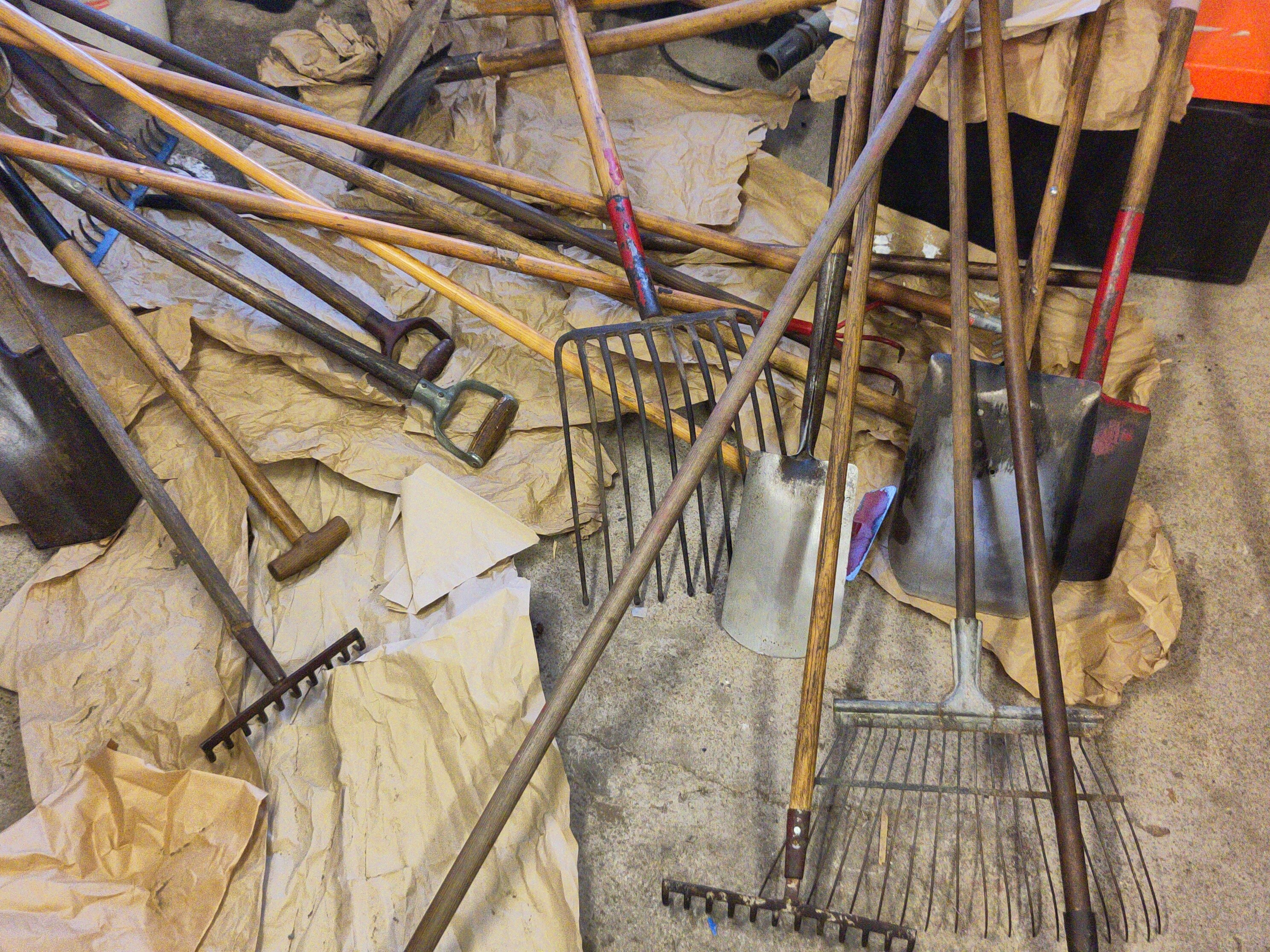
The workshop with tools
Romantic comeback
We had a trip to Ljungskile - the place where we got married 20 years ago. I participated in a panel at the local community college about sustainability. I talked about my own debilitating delusions of growth-focus and techno-narcissism that I used to cherish.
M and me stayed overnight there and had a romantic breakfast before taking the bus and train to travel home through the winter world.
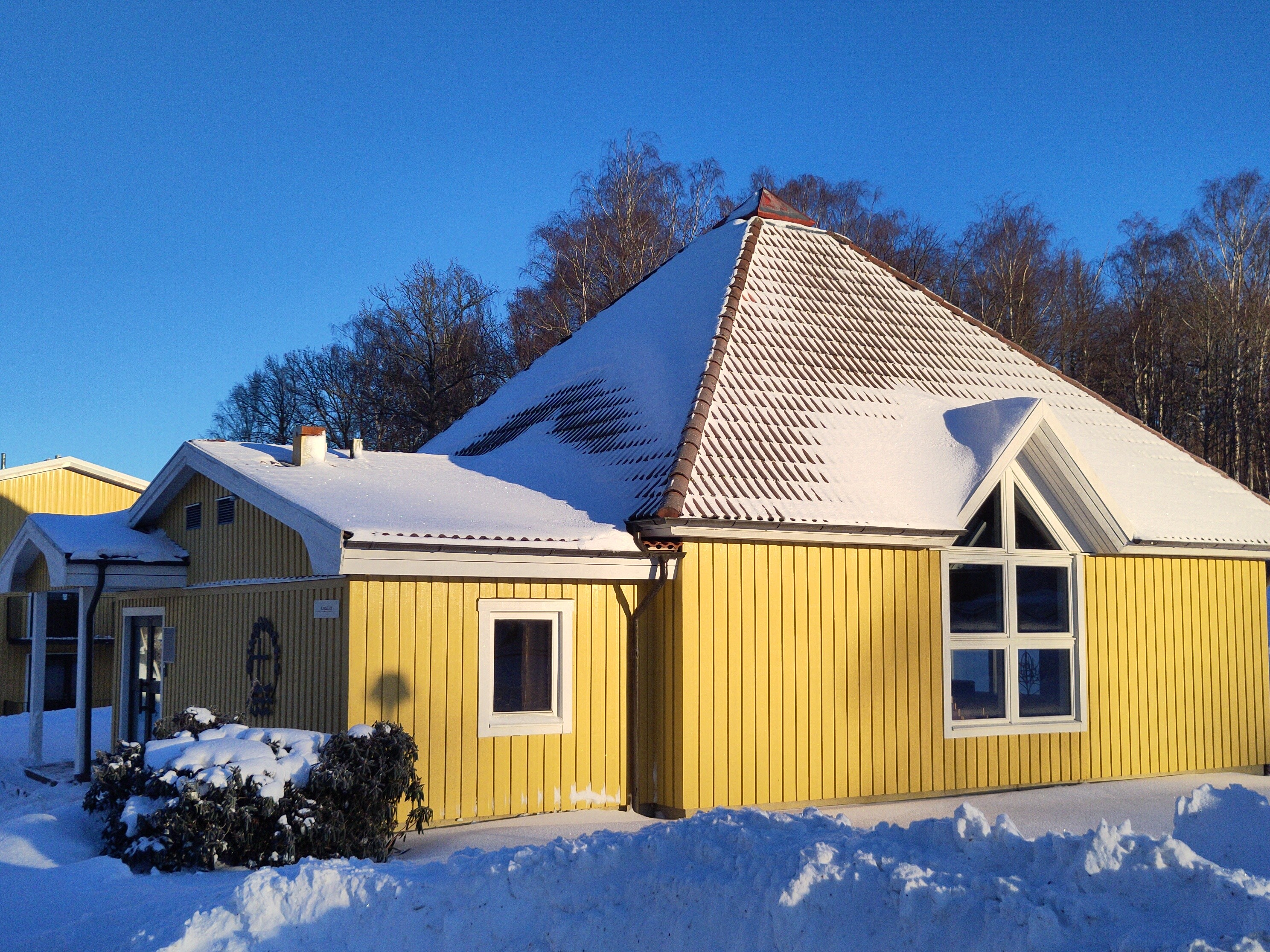
In this chapel we got married in 2004. Time flies